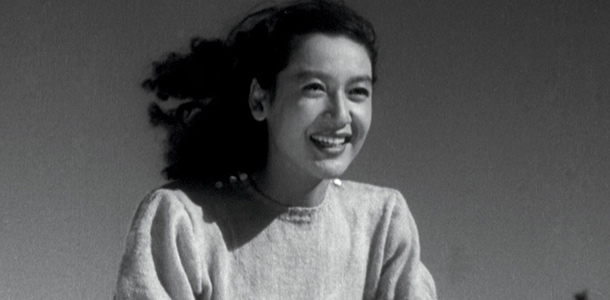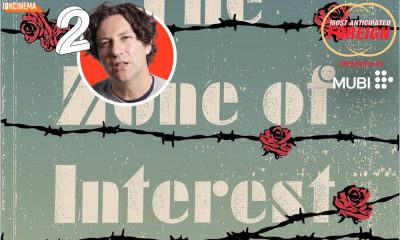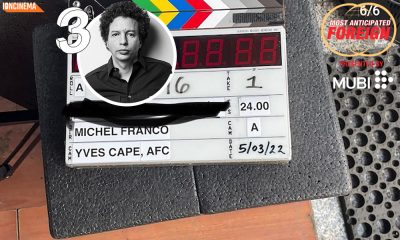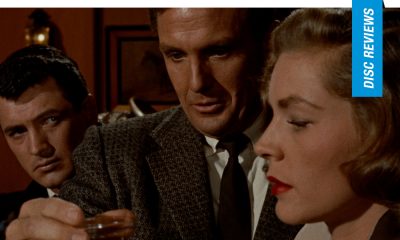Disc Reviews
Criterion Collection: Late Spring | Blu-Ray Review
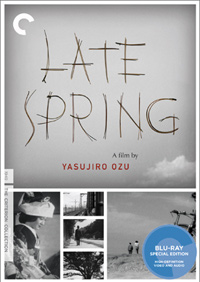 Societal customs and early forms of feminism collide in Late Spring, a masterfully delicate family drama from director Yasujirô Ozu. Produced in 1949, this seemingly modest film set in the exurbs of Tokyo spins a narrative web that slowly entrances and captures, leaving the hearts of unsuspecting viewers hopelessly tangled in its cinematic snares. Newly available on a sensory rich – albeit far from perfect – Criterion blu-ray, Late Spring approaches a home delivery platform worthy of its subtle characterizations and visual intricacies, and a suitable showcase for the full flower of Ozu’s meticulous realization.
Societal customs and early forms of feminism collide in Late Spring, a masterfully delicate family drama from director Yasujirô Ozu. Produced in 1949, this seemingly modest film set in the exurbs of Tokyo spins a narrative web that slowly entrances and captures, leaving the hearts of unsuspecting viewers hopelessly tangled in its cinematic snares. Newly available on a sensory rich – albeit far from perfect – Criterion blu-ray, Late Spring approaches a home delivery platform worthy of its subtle characterizations and visual intricacies, and a suitable showcase for the full flower of Ozu’s meticulous realization.
The story, like many other aspects of the film, appears rudimentarily simple at first glance. A 60-ish widowed economics professor named Shukichi (Chishû Ryû) lives quietly with his adult daughter Noriko (Setsuko Hara) in their traditional country home. Noriko attends to the housework and daily chores while her father entertains a steady stream of visiting family and former coworkers. However, late spring is not only a time of year but a time of life; a time Noriko, pushing 30, has squarely entered. Her biological clock is ticking loudly, audible to everyone except Noriko, who’s perfectly happy to remain at home washing her father’s shirts and cooking his meals. When meddling Aunt Massa (Haruko Sugimura) takes it on herself to find Noriko a suitable mate, a chain of events unfolds that slowly erodes the chemistry of this happy home. The weight of tradition becomes too much for Shukichi and Noriko, and soon they find themselves questioning the underpinnings of their lives.
Despite its apparent simplicity, Late Spring is given significant heft by Ozu’s patented – and often copied – techniques of dramatic enhancement. An air of familiar domesticity is evoked through his constant insistence on underplay. Ozu’s actors deliver their lines in meek mutters, with toothy grins couching every word in respectful pleasantness. These trifling conversations, easily dismissed as chit-chat, loom large later in the film as society’s walls begin to close in on the principals. The sharpness and detail of the disc reveal Ozu’s passion for building three-dimensional depth in the frame, as each scene contains multiple foreground and background elements. Exteriors of trains, sand dunes and ocean waves are filmed in such a way to create maximum penetration along the Z axis, sending the viewer ever deeper into Late Spring’s unique world. While Ozu is famous for formalism, analysis of his frequent locked off medium close-ups shows an obsession with visual complexity held in perfect compositional balance; like a choir of a hundred voices blending in harmony.
Both Chishû Ryû and Setsuko Hara would go on to long and successful careers in the Japanese film industry. Their work here is beyond reproach, creating one of cinema’s most convincing father/daughter dynamics. Ryû’s portrait of a world weary, easily manipulated senior is ultimately heartbreaking, while Hara – as of this writing still kicking at 92 years young – provides an infectious youthful zest that Ozu effectively exploits. Hara at times seems barely out of childhood; her trip into Tokyo for knitting needles rendered with a bubbly innocence that establishes her character more vividly than reams of dialogue could ever accomplish. But in the mind of Aunt Massa, and the whole of society, this vibrant young woman must not be left to her own happy devices. Hara proves to be the film’s driving energy; her performance starkly memorable and brimming with empathy. Even to the tradition-minded audiences of 1949, the sly efforts to force her into a preconceived notion of adulthood must have seemed vilely unjust.
Disc Review
Despite Criterion’s best restorative efforts, Late Spring still contains quite a few scratches and dirty spots, and frequent examples of rinsing errors. The distraction is minimal in most cases, but surprising nonetheless. The timings are exquisite however, with much of the contrasty harshness of the original DVD replaced with a shimmer rich in tonality. The original aspect of 1.33:1 is preserved thankfully, as Ozu was careful to work with the entire frame compositionally. Relatively speaking, the disc is looks quite acceptable for a 60 year old negative; I suppose we’ve simply been spoiled by Criterion’s prior miracles.
The audio, presented in the original mono, has been nicely polished and it’s quiet in all the right places. The mix is simple and perfect, allowing Late Spring’s meditative qualities to fully infect the viewer. As for the disc’s bonus material:
Audio commentary by Richard Peña, program director of New York’s Film Society of Lincoln Center
Viewers are treated to a most erudite lecture. Peña, who admits in the early going he’s a bit awed and intimidated by the work of Ozu, compares the director to Welles and Hitchcock, and then delves deeply into the formal elements that distinguish Ozu’s oerve. The commentary is not so much a shot-by-shot analysis but rather a more general appraisal of the entirety the director’s filmography. Peña’s thoughts are well organized and delivered with clarity and enthusiasm, and his presentation is a must for students and fans of historically important cinema.
Tokyo-ga (1985), filmmaker Wim Wenders’s ninety-two-minute documentary about director Yasujiro Ozu
Wenders’ essay is powerful and impassioned, and worthy of a stand alone release. Narrated by the director, the film chronicles Wenders’ journey to Japan 20 years after Ozu’s death to document both visual and social changes in that nation’s landscape. Wenders attempts to recreate some of Ozu’s famous street scenes, giving the presentation the eerie air of a ghost story. A brief interview with prolific Ozu leading man Chishû Ryû approaches visual poetry, and the piece uses scenes from Ozu’s Tokyo Story as poignant thematic bookends. The bonus is highly recommended and worth the price of the disc to Ozu fans.
A booklet featuring essays by critic Michael Atkinson and Japanese-film historian Donald Richie, as well as Ozu’s thoughts on screenwriter Kogo Noda
This lovely 20 page pamphlet is a nice addition, with lots of interesting reading interspersed with film stills. Atkinson offers a clear explanation of Ozu’s continuing relevance to the western world, while Richie goes into detail on the illustrious career of actress Setsuko Hara. Production credits and notes on the disc’s creation are also included.
Final Thoughts
A testament to Late Spring’s influence is its multitude of imitations and narrative quotations, often with full and prideful acknowledgement by the offending filmmakers. Clair Denis was front and center with crediting Ozu for the framework of her 35 Shots of Rum from a few years ago, while 2003’s Café Lumiere was an official, government commissioned homage by Hou Hsiao-Hsien to commemorate Ozu’s 100th birthday. Each reboot offered interesting updated flavorings to the characters, and clear references to Ozu’s recurrent life-as-train-ride metaphor. Ozu’s brilliant decision to devote the last half of his career to films that illustrated Japan’s transition to the modern world via simple stories of family life created a cinematic legacy of immeasurable worth. Not only are the films artistic triumphs, they stand as superbly detailed artifacts of a time and place. Japan – and indeed the world – was beginning to assimilate the quickening pace of change in the 20th Century. But technological breakthroughs would inspire transformations in social customs as well, and those changes were not digested as easily. The family conflicts of Late Spring were a harbinger a newly emerging emphasis on personal freedom and nontraditional lifestyles; common aspects of life today, but rare and dramatic in Ozu’s era. And as his rich filmography attests, Yasujirô Ozu saw it all coming.



